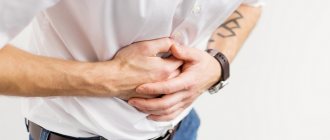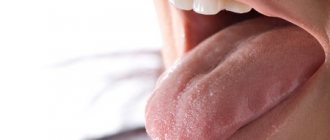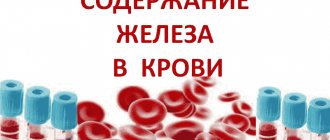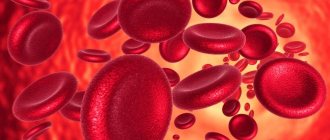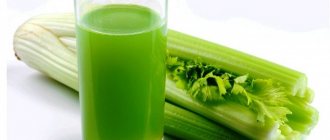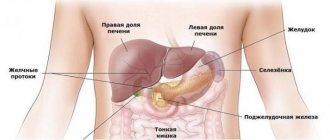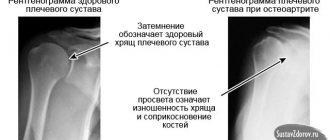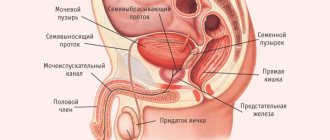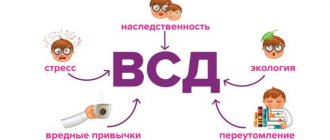General information
Why the left side hurts can be explained by the development of many diseases and pathologies. Discomfort and pain are associated with diseases of those organs located in the left hypochondrium. These are the spleen , the left part of the diaphragm, part of the stomach , pancreas , intestinal loops , pole of the left kidney . When the functions of these organs are impaired, cramps, spasms and pain occur in this area.
Pain in the left side of the abdomen - what is it like?
Initially, you should determine the boundaries of the hypochondrium area. This is the left side of the abdomen - the left quadrant at the top, which is located under the ribs. Accordingly, what exactly hurts in this part of the abdomen in a man, woman or child, and which doctor needs to be contacted, can be determined by the nature of the pain, the period and circumstances of its occurrence. If the pain manifests itself in the upper part of the abdomen in the center and radiates to the left side, we can talk about the development of various diseases.
Stitching pain that occurs during exercise
Those who are interested in why it stings when running, and whether it is dangerous, should take into account that a similar symptom is also observed in healthy people. If tingling only periodically develops during movement, that is, during active physical activity, then this phenomenon can be considered normal. Such symptoms quickly disappear and they only indicate that the adult or child did not warm up enough before starting sports and moved very abruptly.
Before starting classes, it is necessary to conduct a thorough warm-up so that the body gradually adapts to the activation of blood circulation. Stitching pain sometimes develops when walking too actively, which can be prevented by slowing down the pace.
This condition is not dangerous if it hurts only during exercise and this happens to healthy people who do not suffer from heart disease. However, even healthy people who tense too much, when such sensations develop, need to stop and relax, take a deep breath. As you exhale, you should press your palm on the place where the pain develops and sharply lean forward. You can repeat these steps several times.
It is also important to ensure that when the lesson is taking place, breathing is deep, since shallow breathing causes small excursions of the diaphragm.
Severe sharp pain on the left side can also be observed if a person starts exercising after eating. It is important that at least an hour and a half pass after eating before starting classes, as the digestive system must cope with the digestion process.
Dagger sharp pain
If the burning sensation develops suddenly and is not associated with exercise, then you should seek medical help. A sharp burning sensation under the ribs, as well as a burning sensation in the lower abdomen, may indicate a rupture of the spleen, renal pelvis, perforation of the stomach wall and small intestinal loops. Also likely in this case are acute pancreatitis and abdominal myocardial infarction .
Acute pain after injury
If the occurrence of pain in this area is noted when inhaling after an injury, accident, or fall, then there is a possibility that the person’s internal organs are seriously damaged. In this case, it is important to immediately contact specialists, as there is a possibility of a threat to life.
Dull aching pain in the left side
Diffuse, aching pain, which manifests itself over a long period of time and occurs periodically, may be a sign of the development of a chronic disease of the gastrointestinal tract. There is likely inflammation in the stomach - gastritis , as well as pancreatitis , cholecystitis , etc. To determine what may hurt in the left side, or to exclude the development of pathologies, it is important to consult a gastroenterologist, conduct tests and studies. Also, nagging pain in the left hypochondrium develops with certain blood pathologies , bacterial infections , sepsis , and systemic diseases .
It's a dull pain
If there is constant aching and tugging in the hypochondrium, then the causes of heaviness under the ribs may be associated with the development of duodenitis or sluggish colitis . If the patient immediately experiences nausea and vomiting, then we can talk about the likelihood of gastric ulcer .
If the pain is not associated with problems in the functions of the gastrointestinal tract, a pre-infarction condition , angina pectoris , or coronary heart disease .
Diagnosis of disorders and treatment methods
Methods such as ultrasound, stool occult blood testing, and general blood and urine tests will help detect possible diseases. To make a diagnosis, it is often necessary to undergo MRI and CT, electrocardiography and urography with a contrast agent. For a more complete picture, the doctor will prescribe endoscopy and sigmoidoscopy. Women who suspect diseases of the uterus and other reproductive organs are prescribed an examination by a gynecologist.
Self-medication at home is only possible if the patient has already been diagnosed and knows exactly how to get rid of pain and what medications the doctor prescribed for him. Also, the severity of overeating and physical activity can be eliminated without consulting a doctor. In all other cases, treatment measures are taken after consultation with a doctor. In many ways, methods for eliminating pain are similar for different disorders:
- For severe spasms, drink antispasmodics “No-shpu” or “Spazmalgon”. If there are no contraindications, NSAIDs are taken, but they are not very effective for some diseases.
- If the pain is caused by food, you can drink Mezim or Almagel; they are also taken for heaviness in the stomach due to overeating.
- For vomiting, nausea and diarrhea, you can take Nifuroxazide; this drug destroys dangerous bacteria and infections in the gastrointestinal tract.
The remaining methods of long-term treatment are determined by the doctor. They can vary greatly depending on the cause and underlying disease.
You should not get rid of heaviness in the left hypochondrium on your own, since the cause of such discomfort may lie in various pathologies. But pain can be eliminated before the patient goes to the hospital. This will help:
- "No-shpa" is a strong antispasmodic. The effect is achieved 30-45 minutes after administration. It is important to strictly follow the prescription: you can take two tablets no more than three times a day;
- Drotaverine is a myotropic antispasmodic that reduces the tone and motor activity of the smooth muscles of internal organs. The route of administration is 120-240 mg/day in 2-3 doses. Side effects: redness of the skin, fever, chills, weakness, increased heart rate, headache, dizziness, insomnia, nausea, constipation, vomiting. Precautions: do not use for congenital pathologies - malabsorption and lactose intolerance.
- Nitroglycerin helps relax the smooth muscles of the gastrointestinal tract, causing discomfort to subside. Dosage: one tablet under the tongue 2-3 times a day or three drops of liquid nitroglycerin 2-3 times a day. It is recommended to drop nitroglycerin in solution onto a piece of refined sugar.
If the pain and heaviness go away after taking antispasmodics, you should not put off going to the doctor, because they will definitely return again. In addition, frequent acute pain requires immediate surgical intervention.
Folk remedies
When the doctor has already made a diagnosis and prescribed medications, you can use auxiliary means, for example, traditional medicine. Be sure to consult with a specialist before taking various herbal mixtures, make sure that you are not allergic to the ingredients and that this will not harm further treatment. Below are several recipes from alternative medicine that will help cope with heaviness in the left hypochondrium.
| Cause of pain | Recipe |
| Gastritis | Herbs - yarrow, calendula and St. John's wort - are mixed in equal parts. To get an infusion, you need to add two tablespoons of the mixture to half a liter of water and boil for one hour. Take 100 ml of the product half an hour before meals. |
| Propolis tincture will help cope with gastritis at home. Ten drops of tincture should be dissolved in one hundred grams of water and taken half an hour before meals. Propolis tincture is so effective that it is even used in the treatment of gastric and duodenal ulcers. | |
| Stomach or duodenal ulcer | Drink a glass of green juice four times a day for six weeks - it helps better than any medicine. You can replace it with freshly squeezed tomato or sea buckthorn juices, but you won’t be able to achieve the same effect. |
| Shilajit is a quick and effective remedy for treating stomach ulcers. Take 350 ml of mint tea and dissolve five grams of mumiyo. This remedy should be taken on an empty stomach and a teaspoon before bed for 2-3 weeks. | |
| Pancreatitis | Calendula tincture will improve the condition of the pancreas if you take it one teaspoon every day. |
| Add one hundred grams of blueberries to the container, fill it with a liter of alcohol or vodka and leave to steep for a week. You should drink this remedy one teaspoon a day. |
The following remedies will help improve digestion and ease your general condition.
- Marshmallow root with honey has excellent detoxifying and antioxidant properties, which helps reduce harmful substances and speed up digestion. This not only eliminates pain and heaviness, but also neutralizes nausea and heartburn. To make tea, you need to add ten grams of the herb to half a liter of water, boil for twenty minutes, strain, add honey and drink. You can drink up to a liter of this tea per day, but it is important to control the amount of other liquid you drink to avoid swelling.
- Flax is an excellent means of neutralizing the dangerous effects of gastric juice, and it also has a protective property for the gastric mucosa. To prepare this medicine, you need to add 500 g of flax seeds to a liter of water and leave overnight. During this time, a mucous liquid is formed, which must be taken on an empty stomach per day, one hundred grams.
- Birch buds have pronounced antispasmodic properties. For treatment, you need to take one hundred grams of tuberous buds and pour half a liter of boiled water. Method of administration: one teaspoon of infusion three times a day. This infusion calms increased peristalsis and normalizes appetite.
- Plantain is a plant whose effect is to improve bowel function and relieve pain. To prepare the medicine, three tablespoons of washed and chopped leaves should be boiled for five minutes in a liter of clean water, then add a couple of spoons of honey and stir. As soon as the tea has cooled, you need to drink it three times a day, half a glass. Treatment should be carried out for at least three weeks.
- A useful remedy for reducing pain and normalizing the functioning of the digestive tract is tea made from viburnum and rose hips. To prepare one liter of the drink, you need to take 200 grams of fruit and make a compote, which you need to drink 3 glasses a day.
- Sage is a plant that has a good effect on the functioning of the digestive tract and neutralizes the effect of gastric juice. To prepare the medicine, you need to pour 20 g of sage into a glass of warm water and leave for 10-20 minutes, then add a tablespoon of honey and take a tablespoon three times a day.
Herbal therapy is used so widely because such methods do not harm health in any way and only strengthen it.
Homeopathy
Homeopathy can be widely used to get rid of the cause of heaviness in the left hypochondrium. The main drugs that are most effective are the following:
- Ferrum Plus is a homeopathic inorganic preparation. Used to treat digestive disorders with severe nausea and vomiting. The method of using the medicine depends on the form. Dosage: five drops or two capsules three times a day. Side effects are possible in the form of hyperemia of the skin of the hands and feet, fever. Precautions - not used in combination with antispasmodics;
- "Borrum". 8 drops of the product should be added to 100 ml of boiling water, allowed to cool and drunk half an hour before meals. The course of treatment is at least three months. Precautions: Take with caution in patients suffering from brain pathologies. There are no side effects, except for allergic reactions. Precautions: the drug is contraindicated for people allergic to iodine; “Cinchona” is a homeopathic agent that helps normalize the functioning of the liver, spleen, pancreas, and provides an analgesic effect. The drug is taken in the form of drops, four drops twice a day, half an hour before meals at the same time. The duration of treatment is three months. There are no side effects. Contraindications: hypersensitivity to the components of the drug; “Traumeel S” is a homeopathic medicine, the organic substances in which help normalize digestion and restore intestinal functions, especially if heaviness in the left hypochondrium is accompanied by stool disorder.
- "Cinchona" is a homeopathic agent that helps normalize the functioning of the liver, spleen, pancreas, and provides an analgesic effect. The drug is taken in the form of drops, four drops twice a day, half an hour before meals at the same time. The duration of treatment is three months. There are no side effects. Contraindications: hypersensitivity to the components of the drug;
- "Traumeel S" is a homeopathic medicine, the organic substances in which help normalize digestion and restore intestinal functions, especially if heaviness in the left hypochondrium is accompanied by stool disorder.
Drugs
Treatment tactics are completely dictated by the provoking source. However, sometimes special treatment is not required - this is only possible when distension develops due to physiological factors.
In all other situations, conservative treatment should combine:
- taking medications;
- physiotherapeutic procedures;
- massotherapy;
- exercise therapy exercises;
- following a gentle diet;
- traditional medicine recipes and other alternative methods, but such treatment must be agreed upon by the attending physician and fully controlled by him.
Treatment with surgical intervention is carried out only for individual indications or in cases where there are no positive results from the above methods of therapy.
Heaviness in the left side is treated with conservative methods, which will differ slightly depending on the provocateur:
- In case of injuries, it may be necessary to take anesthetic substances, physiotherapeutic procedures, exercise therapy and therapeutic massage. Sometimes surgery may be the only treatment option.
- Spinal pathologies are eliminated with novocaine blockades, NSAIDs, therapeutic exercises, medicinal electrophoresis, ultrasound, mud and paraffin applications, acupuncture and other alternative methods.
- Heart and kidney diseases require the use of special medications and lifestyle changes.
- Gastrointestinal diseases are eliminated by following a gentle diet, taking enzymes, prebiotics, probiotics, hepatoprotectors and other medications, and by rationalizing the work and rest regime.
Causes of pain in the hypochondrium on the left
Thus, answering the question of what may hurt in the left hypochondrium, the following reasons should be mentioned:
- cardiomyopathy , heart damage , heart attack ;
- gastrointestinal diseases - cholecystitis , ulcers , gastritis , pancreatitis , duodenitis , colitis ;
- intercostal neuralgia;
- enlargement or rupture of the spleen;
- tumors of internal organs;
- splenic infarction due to arterial thrombosis ;
- rheumatic manifestations;
- diaphragm injury, diaphragmatic hernia ;
- left-sided pleurisy , as well as left-sided pneumonia , developing in the lower part of the left lung.
Abdominal organs
It is necessary to take into account what is in a person’s hypochondrium area, as well as the nature of the pain (radiating to the back, aching, stabbing, just heaviness or discomfort) as well as factors that could determine the development of such pain (after eating, when inhaling during physical exercise). exercises, etc.).
The hypochondrium in front of a woman may hurt during pregnancy . In this condition, pain also appears in the left hypochondrium from the back due to the strong pressure of the enlarged uterus on the internal organs. Sometimes expectant mothers complain that there is a periodic tingling sensation in their side.
Pain in the left hypochondrium in the front can also be associated with previous injuries - in this case, you may feel discomfort in the front or a dull pain in the front, as well as severe, diffuse pain. In this case, the reasons should be immediately determined by a doctor.
Types of pain and suspected diagnosis
The most common complaints of pain under the ribs on the left are associated with cardiac disorders. But other pathologies are also causes of discomfort. Under the ribs there are nerve fibers, blood vessels, muscles, lymph nodes, and all of them can cause pain.
Diseases associated with the gastrointestinal tract:
- Irritable bowel syndrome. This is a condition that causes, in addition to acute pain, bloating and intestinal cramps. Often accompanied by diarrhea and constipation, especially after a heavy meal. Even without signs of an irritated stomach, overeating leads to the accumulation of gases and pressure in the stomach, which causes pain under the ribs.
- Stomach ulcer. A developing wound in the stomach lining can be caused by long-term use of nonsteroidal anti-inflammatory drugs, chronic excess stomach acid, or infection with the bacterium H. Pylori. An acute attack is characterized by sharp pain radiating from the back, passing under the ribs on the left side. Additional symptoms: loss of appetite, acid reflux, heartburn, nausea, vomiting, high fever.
- Reflux disease. Heartburn occurs when excess stomach acid builds up or some of it backs up into the esophagus, causing a stabbing pain on the left side of the ribs that feels like it's coming from the heart. It often appears after eating spicy or sour foods and is accompanied by bloating.
- Colitis. It is characterized by colic and spasms that occur in waves, attacks, bloating, rumbling in the abdomen, and indigestion.
- Gastritis. In addition to discomfort in the left side of the hypochondrium, flatulence, increased sweating, intoxication, weakness and malaise occur.
Diseases of the cardiovascular system:
- Myocardial infarction. Problems with the heart and blood vessels cause frequent heart contractions and pain in the front under the ribs. Hiccups, vomiting, and heavy sweating may occur. At the same time, the person’s face acquires a bluish tint, lips turn pale, and shortness of breath appears. With all heart diseases, there is a sharp reduction in the supply of oxygen to the heart muscle, which causes tightness and squeezing in the chest.
- Angina pectoris. When the disease is caused by a lack of blood flow to the heart muscle, pain appears under the chest on the left side. It can move towards the shoulder, neck, left arm.
- Pericarditis. Inflammation of the serous membrane creates an obstacle to the free movement of the heart, causing pain in the left hypochondrium. At the same time, other symptoms develop: dry cough, increased abdominal circumference, shortness of breath, weakness.
Pain in the left side under the ribs in front, associated with respiratory diseases:
- Pleurisy. The tissue covering the lungs becomes inflamed as a result of bacterial, viral, or fungal pneumonia. The main symptom: sharp, stabbing pain that occurs when breathing.
- Pneumonia. Inflammation of the lung on the left side provokes the appearance of mild pain under the ribs on the left. When moving, sighing, coughing, a slight tingling sensation, shortness of breath, and rapid breathing occur.
Spinal diseases, rib injuries:
- Osteochondrosis. Problems with the spine provoke pain in the left hypochondrium. This is especially pronounced when walking or sudden movement.
Osteochondrosis can compress the nerve, causing pain in the left side under the ribs
- Intervertebral disc herniation. A ruptured disc and pressure on a nerve in the spine results in severe pain in the hypochondrium, which envelops the entire chest. However, it can spread around, in the shoulder blade, in the stomach and even in the leg.
- Degenerative joint diseases, osteoarthritis, arthrosis, cause pain under the ribs in the back.
- Rib injury. Injury to a rib in the upper body, affecting the rib cage, spine, muscles or ligaments, causes severe back pain. If an internal organ is damaged during an injury, this causes severe pain under the ribs on the left side.
Endocrine system diseases:
- Pancreatitis. An inflammatory process in the pancreas caused by active digestive enzymes. Inflammation causes pain, which can become acute and sudden, girdling, accompanied by a feeling of heaviness in the stomach, belching, and a bitter taste in the mouth. It is felt in the left hypochondrium and is often accompanied by high fever and intoxication of the body.
- Oncological diseases. Symptoms of pathology in the pancreas may not appear for a long time, but when the tumor becomes large, it makes itself felt with severe bursting pain in the left hypochondrium. The accompanying symptoms: the skin and sclera of the eyes become yellow, as with hepatitis A.
- Splenic rupture. A large lymphoid organ, which, with a stretch, can be attributed to the endocrine system. An increase in size leads to its rupture and severe pain. Accompanying symptoms: nausea, cyanosis in the navel, headache, increased sweating.
Costochondritis. This is a condition that occurs as a result of an infectious inflammation of the cartilage that connects the ribs to the sternum.
Unbearable pain appears near the sternum, is accompanied by heavy breathing, and intensifies with inhalation and coughing. It is often perceived as heart pain because it originates from under the sternum on the left side. The development of costochondritis is often influenced by viral infections, arthritis, and tumors.
The disorder is characterized by discomfort of varying strength in the subscapular region, lower back, and retrosternal part. The disease occurs due to pinched nerve endings. The pain intensifies with sharp turns, inhalation, exhalation, and coughing.
Stones that develop in the kidneys enter the urinary canal and become stuck there. This results in sharp pain under the left ribs if the left kidney is affected. The passage of stones is a very painful process, which is expressed by severe acute pain in the left hypochondrium.
Inflammatory processes occurring in the female genital organs are usually reflected by pain in the lower abdomen. But in some cases, sudden, stabbing groin pain may occur, which radiates to the left hypochondrium in front. This occurs when an ovarian cyst ruptures.
Symptoms accompanying the pathology: increased body temperature, uterine bleeding, a sharp decrease in blood pressure, general intoxication of the body.
During pregnancy, some women develop pain under the ribs due to displacement of internal organs. And also the enlarged uterus in some cases puts pressure on the ureter and renal pelvis, which leads to discomfort. Increased activity of the child during intrauterine development often creates pain in the ribs in the front.
Hemorrhoids can cause a dull, aching pain.
When different organs and systems are affected, pain of different nature and intensity occurs. An accurate description of the pain syndrome allows us to make a presumptive diagnosis.
Additional symptoms and examination methods will help determine the final one. Types of pain by nature and degree of intensity:
When making a diagnosis, you should pay attention to other symptoms that accompany the pain syndrome - nausea, vomiting, the presence or absence of bleeding in women, the presence or absence of a suspected pregnancy, the nature of urination and bowel movements.
Pain in the left side under the ribs, mechanism of occurrence
Why it hurts on the left side under the ribs also depends on the mechanism of development of such pain. This indicator serves as an additional sign in the diagnostic process, when the doctor tries to determine what hurts in the left side under the ribs, what is on the right and causes such sensations.
The following division of pain in this area is known:
| Nature of pain | Features of manifestation |
| Referred pain | They appear as irradiating from organs located far away. This may be pain due to left-sided pneumonia , heart attack , pleurisy , etc. Pain may radiate to the ribs in the left front, in the back behind, on both sides. |
| Visceral pain | Develop with intestinal spasms or in case of a violation gastric motility. Also, visceral pain is characteristic of the state of stretching of the muscle fibers of the gastrointestinal tract. A person may complain that his stomach hurts; if the disease progresses, pain can be felt in the center, as well as on the right side. The patient sometimes complains that there is gurgling in the stomach, pulling on both sides. In case of flatulence, a dull aching pain may be noted in the left and right sides. In the case of intestinal colic , there is a cramping pain, and a person may have complaints that it is stabbing in other nearby areas of the body - between the ribs in the middle, on the side, etc. |
| Peritoneal pain | Painful sensations appear constantly, and the pain is clearly localized, it can be cutting, sharp. It is provoked by irritation of the peritoneum, for example, a stomach ulcer . Such pains become more pronounced when inhaling, after eating, and sometimes when pressing. |
Despite the nature of the pain, what can cause such attacks under the ribs must be diagnosed by a doctor. When determining the causes, the specialist, first of all, takes into account what is located on the left under the ribs and is interested in the nature and mechanism of pain. It also finds out some important points - for example, is there pain in the ribs when coughing, does the rib hurt when pressed. Which organ is located in this area and where the pain develops will be determined by studies prescribed by a specialist.
Pain in front of the left hypochondrium
If pain is felt in the left side at waist level, then most likely we are talking about damage to the spleen or stomach tissue. However, if pain occurs at the waist level, then the doctor makes a differential diagnosis with myositis , myocardial infarction , colitis . If the pain shifts upward and it manifests itself in the center, then it is likely that diseases of the stomach are combined with diseases of the duodenum and gall bladder.
When the pain is behind
If a person complains that the left side of the back hurts, and this part hurts constantly, then there is probably a lesion in the left kidney. In this case, the pain from the back is strong.
If your kidney hurts, the symptoms may bother you constantly. What to do in such a case is determined by the doctor after making a diagnosis. Signs of the disease can be determined by ultrasound, and urine and blood tests also need to be performed.
It also hurts under the left shoulder blade behind or a little lower with osteochondrosis . The causes of pain in the scapula from behind may be associated with palpation of the paravertebral processes . Discomfort on the side of the scapula may occur with myositis .
Girdle pain, which is combined with unpleasant sensations on the left
A nagging girdle pain that appears where the left lower rib is located, moves from behind to the anterior abdominal wall, then one may suspect that the pancreas and pancreatitis . As a rule, with pancreatitis, the girdle pain in the stomach and back intensifies when inflammation develops. Then it is sharp, radiating to the back. It becomes a little easier for a person to sit or lean forward.
Nature and intensity of pain
Have you been trying to heal your JOINTS for many years?
Head of the Institute for the Treatment of Joints: “You will be amazed at how easy it is to cure your joints by taking the product every day for 147 rubles ...
Read more "
The nature of the pain will help you determine which organ should be treated and which doctor to see.
1. A dull aching pain under the ribs on the left indicates:
- gastritis or gastric ulcer. May be accompanied by vomiting, which brings relief, decreased appetite and diarrhea;
- stomach cancer. May be accompanied by a sharp weight loss, weakness, anemia, symptoms similar to toxicosis in pregnant women (for example, the appearance of an aversion to meat);
- enlarged spleen;
- diseases of the pancreas. May be accompanied by fever, nausea or vomiting.
2. Sharp pain in the left hypochondrium may be a sign of:
- stomach or duodenal ulcers. May be accompanied by heartburn, vomiting and constipation;
- nervous overstrain.
3. Stitching pain on the left under the ribs indicates :
- lung diseases. Especially if it worsens with coughing and deep breaths (pneumonia, inflammation, tuberculosis or cancer of the left lung). May be accompanied by fever, shortness of breath, constipation and general intoxication of the body;
- ulcer of the duodenum or stomach. May be accompanied by nausea and vomiting;
- heart diseases;
- vegetative-vascular dystonia.
Causes associated with diaphragm pathologies
Severity and constant pain develops with pathologies of the diaphragm , as well as with diaphragmatic hernia . A hole in the diaphragm separates the thoracic cavity from the abdominal cavity. If the muscle tissue that regulates this opening weakens, the lumen widens and the upper part of the stomach ends up in the chest cavity. Accordingly, the contents of the stomach are thrown into the esophagus, as a result of which this area constantly ache - an aching, dull pain develops, nausea, and heartburn .
A diaphragmatic hernia overweight people , and during intense physical exertion. Also, such diseases often occur in older people due to weakening of the muscular system. In some cases, pinching of the stomach occurs, then there is a sharp cutting pain in the stomach and in the left hypochondrium, sometimes pain in the stomach radiates to the back.
Pain due to intercostal neuralgia
As neurological diseases develop, irritation or compression of the intercostal nerves may occur. When nerve cells are affected, in patients with intercostal neuralgia the pain sensations can have a very wide range: cramping, pulsating, piercing, sometimes sharp or aching, dull or burning pains develop. A person complains that there is pressure, tugging, numbness, aching, and burning in the lumbar region, under the ribs. Such sensations intensify when breathing - sighing, when inhaling, exhaling, as well as when coughing, pressing on certain points on the back, chest, spine, when tense, changing body position.
During attacks of neuralgia, there is tingling under the chest, periodic muscle twitching, pallor or redness of the skin, and severe sweating.
Patients with neuralgia often ask doctors what is on the left side of a person, since the pain often radiates under the shoulder blade, is felt under the heart, in the abdominal area from above, in the upper back under the shoulder blade, and also in other places when pressed. There is a feeling that it is cutting, “getting in the way” and twitching in different places.
Painful sensations occur at any time of the day, and numbness is noted in those places where the nerve pathways have been damaged.
Pain on the left with cardiac pathologies
In the area of the heart, burning pain is not always associated specifically with cardiac pathologies, because a person may be bothered by organs located under the heart. However, if aching pain appears on the left, under the left nipple, simultaneously with shortness of breath , nausea , rapid heartbeat , and this occurs both during exercise and at rest, the development of heart disease can be suspected. The patient may feel heaviness and burning under the sternum. Similar symptoms may appear with coronary heart disease . If the coronary arteries , the blood supply to the heart muscle is disrupted, causing the development of ischemia.
What hurts in the left side below the ribs is also of interest to those who suffer from cardiomyopathy . This is a series of diseases in which the function of the heart is impaired, but there is no arterial hypertension , pathology of the valve apparatus , or vascular disease of the heart . In patients with cardiomyopathies, the heart muscle changes structurally. As a result, a person becomes more tired, colic and a feeling of pain develop during physical activity.
Pain on the left in diseases of the spleen
If pain occurs on the left side, one may suspect that the person’s spleen is bothering him.
Where is this organ located and how does it hurt? The spleen is fragile and easily ruptures, so pain develops in any pathological condition of this organ. If the spleen hurts, symptoms of its slight enlargement are difficult to detect, especially in overweight people , since the spleen in humans is located deep in the hypochondrium on the left.
Treatment
If an organ ruptures, emergency medical attention is required as it can lead to bleeding and death.
If a person has an enlarged spleen but there are no signs and the cause cannot be identified, the doctor may suggest observation and will need to go to hospital for a re-evaluation in 6-12 months, or sooner if any symptoms occur.
Removal
If serious complications occur or the cause of the organ's pain or condition cannot be identified or treated, surgical removal of the spleen (splenectomy) may be recommended. In chronic or critical cases, surgery may be the best treatment option.
